It Runs Red
It Runs Red is a bloody, fast paced, Third-Person, “Boss Rush” game that takes place in a Victorian-Gothic city during the 1800s. The player combats larger-than-life demons, absorbing the demon’s blood in order to power their abilities. The player’s strongest ability lets them transform into the demon they are fighting to use their powers against them.
During the life cycle of It Runs Red, I was responsible for designing, scripting, and implementing all Gameplay Centric Elements. This responsibility was also paired with a great deal of creative freedom, which allowed me the opportunity to sculpt combat into what I had envisioned it to be presented in my technical demo and prototype. This meant designing, programming, and implementing the Player Controller and its associated mechanics, as well as all 3 Enemy AI.
Role: Creative Director
Project Details:
• Team Size: 13
• Project Life Cycle : 4 months
• Game Engine: Unreal Engine 4
Highlighted Contributions:
• Created 3 Unique Player Controllers
• Created 5 Player Abilities (2 Movement-based and 3 Resource-based)
• Created 3 Unique Player Transformations
• Designed and Scripted 3 Dynamic Enemy AIs
• Worked closely with designers to create arenas for boss encounters that capitalize on the Player’s unique abilities and extreme mobility
• Self-published It Runs Red to Steam
Player Combat
When I was initially designing It Runs Red, I wanted to make sure to keep player agency at the core of it’s design. My intention was to provide the player with a variety of options to develop their own method of best combating our 3 unique Bosses. Player Combat has 5 key components that make up its entirety: Melee Combat, Ranged Combat, Movement-based Abilities, Blood-based Abilities, and Transformations.
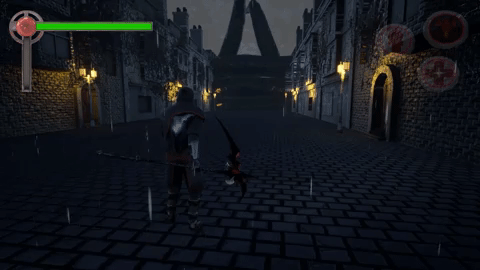
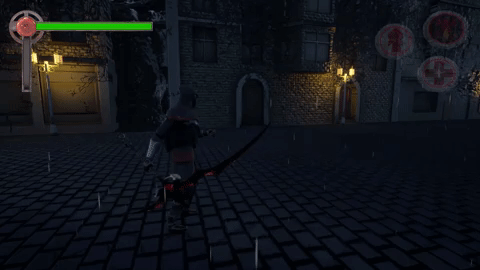
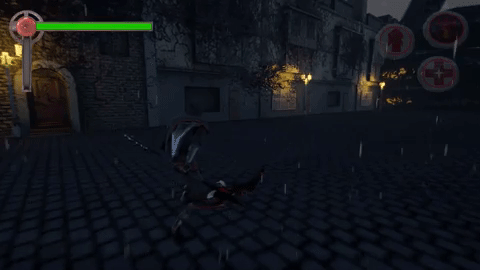
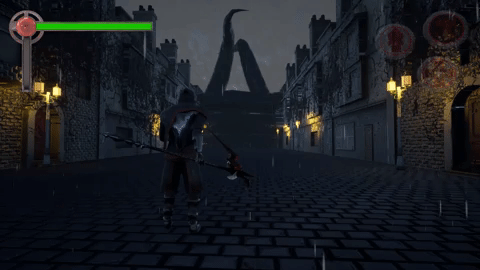
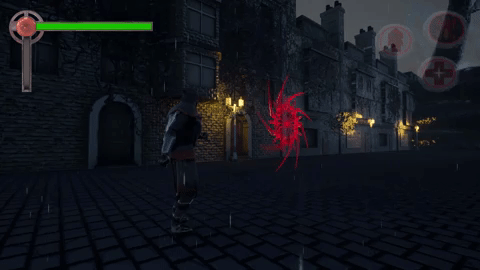
Melee Combat:
Player agency was always at the forefront of my design. I wanted to provide the player with mechanics that can be utilized to fit their own play style. Melee Combat is the player’s primary method of dealing damage to the bosses. Each attack in the 3-Hit Combo can be extended by holding down the attack input at the end of the swing. The player’s weapon spins, dealing damage over time upon a successful hit. The spinning attacks don’t deal as much damage as a standard swing, but the attack generates more blood (resource). Every single melee confrontation provides the player with the choice between damage and resource generation. The player also has access to a dash attack, which covers a great distance and can be used to engage or disengage a fight. If the player misjudged the direction/distance of a dash, they can extend it via the dash attack to increase their odds of survivability.
Ranged Combat:
Ranged Combat gives the player the opportunity to fight a little bit safer while they get a good idea of the boss’ attacks. I designed some of the boss encounters with the intention of giving the player the opportunity to capitalize on ranged combat. The player’s weapon can be thrown to deal a reduced amount of damage. While aiming, time within the game is slowed, giving the player more time to make a meaningful decision on how to use their weapon. If the thrown weapon connects with a boss’ “Weakpoint,” the boss drops to the ground and enters a state of vulnerability. Here, the player can decide whether or not they want to transition into Melee Combat or put some distance between the boss and them. At any point while the weapon is traveling in air, the player can hold the aim/throw input to stop the weapon midair and cause it to spin in place, dealing damage as long as it connects with an enemy.
Player Abilities:
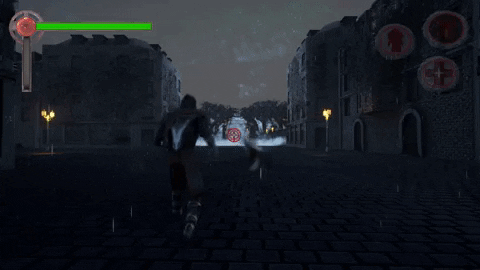
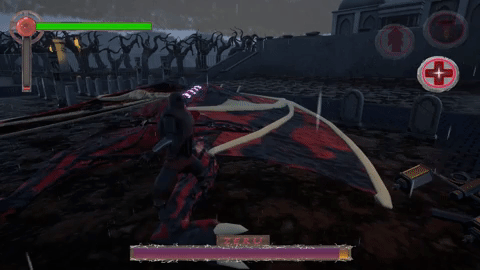
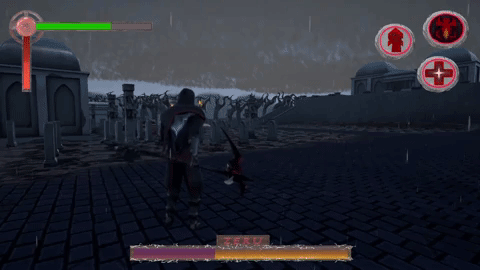
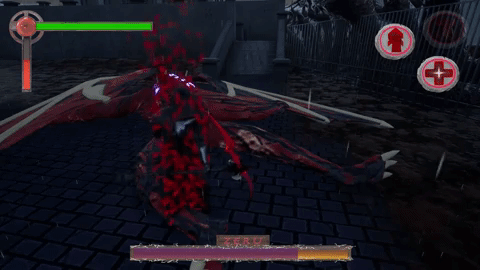
Movement-based Abilities:
The intention behind the inclusion of these abilities is to add a dynamic layer of mobility to combat. With the inclusion of “over the top,” destructive boss battles, the player will need to be highly mobile in order to effectively combat large, sweeping attacks from the 3 bosses. The dash ability is used in order to both dodge incoming attacks and put distance between the player and the enemy. While in motion, the player has frames of invincibility from certain attacks. This ability can also be used while in the air, increasing air maneuverability and can help the player get out of situations they no longer wish to be in. In addition to the dash, the player can also teleport to their scythe after it has been thrown. Both abilities can be used in conjunction to cover great distances.
Blood-based Abilities:
Supporting the theme of “bloody combat,” the design of these resource-based abilities is to provide a use for all of the blood that gets scattered around during combat. Blood is gathered and utilized in three abilities. The “Heal” ability is intended to give the player a safety net. I want the player to come up with their own way of combating each boss and this ability is intended to give them time to find it. The second ability, “Empower,” boosts damage is designed to be the “middle ground” between dealing normal damage and dealing an exorbitant amount of damage while transformed. If the player took too much damage and needed to heal, they won’t have a full meter to transform, so they can choose to use the “Empower” ability for quick, increased damage, or choose to save their blood for the final Blood-based ability, “Transform.” Using this ability transforms the player into the boss they are currently fighting, gaining their attacks and strength.
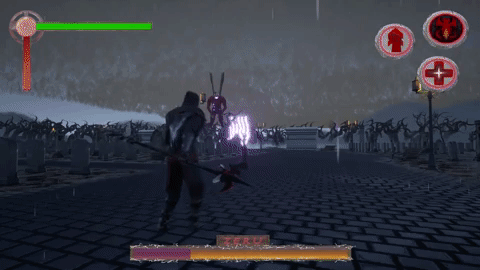
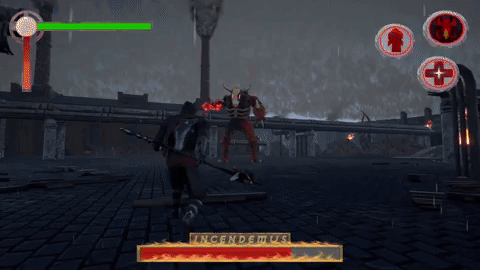
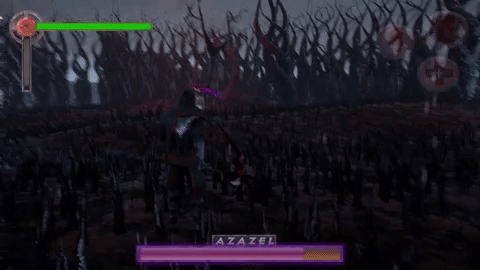
Transformations:
My intention behind the Transformations was to drastically change up the pace of combat and provide a unique experience that derives from designing the bosses around the idea that they will be both combated and played as. This resulted in converting the script for each Boss AI into their own player controller. The player can Transform into each of the 3 bosses. Balancing the Transformations was a difficult task. I wanted to make the player feel powerful and absolutely feel like they just got the upper hand against the boss they are fighting, but I didn’t want to make the game extremely easy by allowing them to do so. I decided to make the Transformations last a short amount of time and only give them access to the boss’ “basic” and “ultimate” attack.
Enemy AI
From the beginning, the concept behind It Runs Red started with the idea of fighting larger than life bosses and giving players the ability to Transform into the boss they are currently fighting. Each of the 3 bosses have 3 attacks and a Weakpoint, but their design and execution differs for each.
Boss #1 (Zeru the Gargoyle):
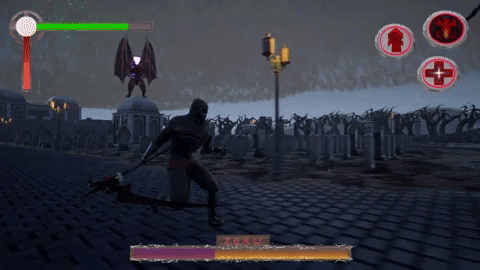
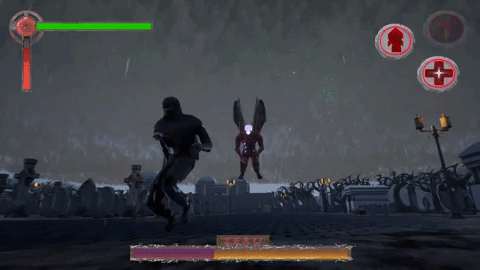
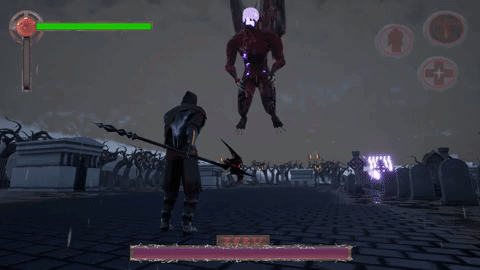

Design:
When initially creating the concept behind the Gargoyle boss, I determined we needed to deviate from the common depiction of a Gargoyle. Since stone doesn’t bleed, ours is made of flesh and bone. Zeru is a electricity-based, Gargoyle demon. Using lightning and concentrated electricity as a weapon, the Gargoyle puts a greater focus on ranged combat. In order compensate for this style of combat, its Weakpoint is on its face. The player can throw their Scythe at the blinking Weakpoint in order to knock it to the ground and take advantage of a state of vulnerability. Both the attacks and triggering the Weakpoint will trigger destructible mesh on collision.
Combat:
The Gargoyle’s “Ultimate” attack is Lightning Strikes. Lightning rains down on the player’s position, forcing the player to keep moving and make use of their Movement-based abilities. Its “Basic” attack, Electricity Orbs. These orbs home in on the player’s position. The attack can be subverted before impact by making them collide with a structure or by throwing the Scythe at them. I strongly believe that a boss cannot be truly dynamic if it only has one outlet of attack. Therefore, the Gargoyle has a highly destructive physical attack. The Divebomb attack has the boss make two sweeping attempts to collide with the player, knocking the player back on contact.
Boss #2 (Incendemus the Devastator):
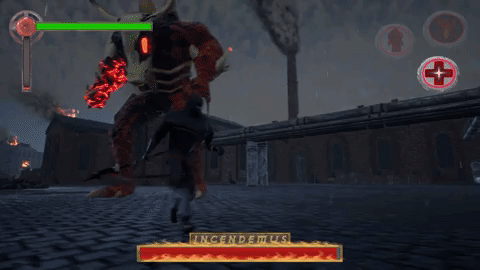
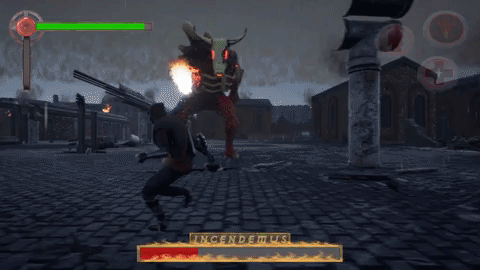
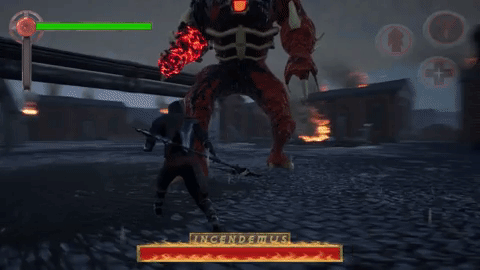
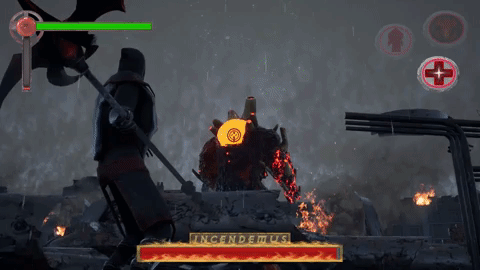
Design:
My intention behind the design of the Devastator was to create a large scale, destructive boss. I wanted every step the boss took to be “earthshaking” and feel powerful. I designed the auditory, visual, and haptic feedback to all work together to convey weight to the the Devastator’s footsteps. Incendemus, as his name may suggest, is a fire-based demon. I wanted this boss to serve, in a lot of ways, as a counterpart to the Gargoyle. In its opposition, the Devastator puts a greater focus on melee/physical combat. However, like the Gargoyle, this boss is made of flesh and bone as well. In order to add another layer of complexity to the boss encounter, the Devastator’s Weakpoint is on its back. This encourages the player to get up close in order to get around the boss to be in a position to trigger its Weakpoint. Additionally, avoiding the boss’ charge attack provides another window of opportunity to trigger the Weakpoint.
Combat:
Compared to the Gargoyle, the Devastator’s attacks have a longer windup time, but can deal more damage in a single instance. Its “Ultimate” attack is the Flamethrower. After a brief delay, the boss fires an intense stream of fire from its arm. The attack has a larger hitbox towards the end of its range, so I designed the attack to allow the player to be able to stand “safely” beneath the boss during the duration. However, if the player remains below the Devastator at the end of the attack, the boss’ will then immediately transition into its “Basic” attack, the 2-Hit Melee Combo. The Devastator’s most destructive attack is the Charge attack. The charging boss smashes through most structure, leaving rubble in its wake. Upon hitting a non-destructible structure, the boss recoils back, and is briefly vulnerable. If the boss hits the player, the player is knocked backwards.
Boss #3 (Azazel the Fallen King):
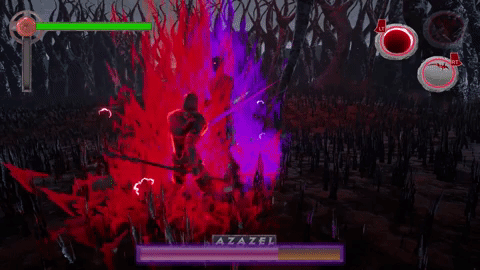
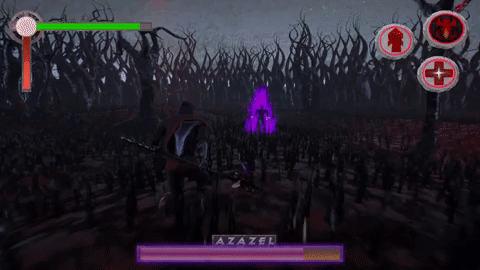
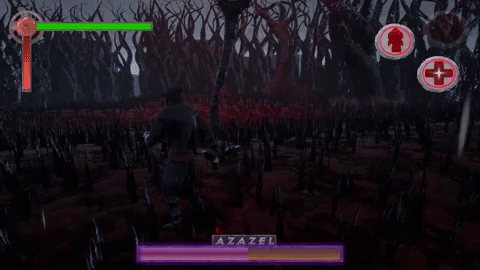
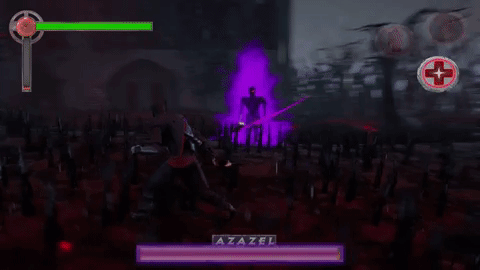
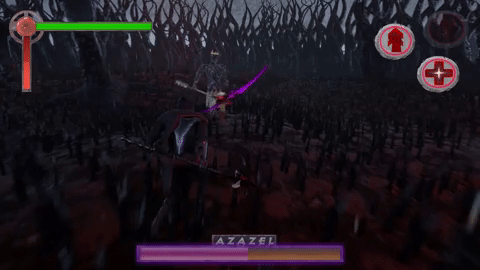
Design:
The Final boss is drastically different than the first two bosses. Instead of being a towering demon, the Fallen King is a humanoid type enemy. I immediately ran into the issue of making this boss look and feel equally, if not more powerful than the last 2 bosses. In order to visually represent the power of the Fallen King, I decided to add violent aura to the boss. Debris appears to lift off the ground as the aura explodes around him. Purple was chosen because I knew it would be the most sinister color to clash effectively with the player’s red. Both aura in unison create a high contrast the hellscape to which the battle takes place. The Fallen King is made of flesh and a supernatural element called “Corruption.” Since the viscous Corruption is something I came up with and is not a conventional element like fire and lightning, I had the opportunity to represent this supernatural element in a unique way. The boss’ “Ultimate” attack is an amalgamation of the element in a viscous and destructive form. As a humanoid figure, the Fallen King is a much smaller target. I would argue that a physical weakpoint like the other bosses have would not have made sense. Instead, this boss’ weakpoint was designed around his attacks and combat.
Combat:
When I initially designed the combat around the Fallen King, my intention for this boss was “you, but better.” His attacks are largely based on the player’s but with a twist. The Fallen King’s “Ultimate” attack is the Hell Sphere. Instead of throwing his weapon like the player, he generates a large sphere that homes in on the player and explodes upon impact. The boss’ “Basic” attack is very similar to the player’s 3-Hit Melee Combo, but with each swing, he fire a projectile. This attack deals damage on contact with the weapon itself, and the projectile. The Fallen King’s final attack is Vanishing Strikes. He combines the teleport and the dash attack to quickly attack the player. The boss slowly disappears and becomes intangible. After a brief delay, the boss randomly teleports to a position around the player and makes an attempt to hit the player with a dash attack before disappearing again to repeat the attack. The Fallen King’s state of vulnerability comes after launching his powerful attacks. During this state, the boss’ aura shuts off and his entire body acts as a weakpoint. After a generous delay, his aura violently activates once more and the fight continues.
Concept to Prototype
In January 2019, I created the original concept of It Runs Red. When I had pitched the game, I had prepared a technical demo. Using character models, animations, and environmental art from the Unreal Marketplace, I was able to quickly establish a visual representation of our game. However, I soon learned working solo was far more difficult than I had originally anticipated. I did not have the time nor the required skill to develop the visual representation of my game. Eventually, I was able to pick up a talented artist to help create the environmental art present within our game. The two of us worked together to create the prototype shown in the video. Our prototype shows off the core elements of our intended aesthetic and one of the Boss Battle concepts that ended up getting reworked into Boss #2.